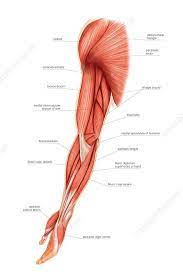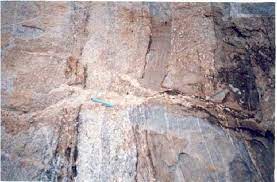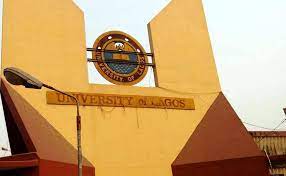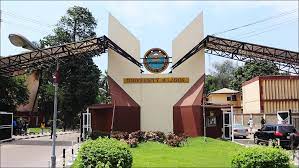
The muscles of the upper limb are essential for everyday activities such as lifting, reaching, and grasping. These muscles are important for maintaining proper posture and for performing tasks with precision. Proper knowledge of these muscles is essential for fitness trainers, physical therapists, and orthopedic surgeons.
This article highlights the anatomy, function, and common injuries of the muscles of the upper limb.
Overview of the muscles of the upper limb
The upper limb is composed of the shoulder girdle, the arm, the forearm, and the hand. The muscles of the upper limb can be divided into several functional groups. The muscles of the shoulder region include the deltoid, supraspinatus, infraspinatus, teres minor, teres major, pectoralis major, and latissimus dorsi.
The muscles of the forearm include flexor muscles that bend the wrist and fingers and extend the thumb, and extensor muscles that straighten the wrist and fingers and extend the thumb. The muscles of the hand include thenar muscles that control thumb movements and hypothenar muscles that control movement of the pinky finger.
Knowledge of the muscles of the upper limb is essential for athletes, fitness enthusiasts, and individuals recovering from musculoskeletal injuries. Understanding the action of these muscles can help develop a plan for injury prevention, muscle strengthening, and rehabilitation.
Anatomy of the Upper Limb Muscles
Bones of the upper limb
The upper limb consists of the clavicle, scapula, humerus, radius, ulna, and the bones of the wrist and hand. The clavicle articulates with the sternum and the acromion of the scapula. The scapula articulates with the humerus and the clavicle, and provides attachment for several muscles.
Joints and movements of the upper limb
The upper limb can perform a variety of movements, including flexion, extension, abduction, adduction, and rotation. The joints of the upper limb are classified as synovial joints and include the sternoclavicular joint, acromioclavicular joint, glenohumeral joint, elbow joint, proximal and distal radioulnar joints, and the wrist and hand joints.
Muscle groups and their functions
The muscles of the upper limb can be divided into several functional groups. The muscles of the shoulder region include the deltoid which extends and abducts the arm, the supraspinatus which assists in abduction, the infraspinatus and teres minor which externally rotate the arm, the teres major which adducts and internally rotates the arm, the pectoralis major which flexes, adducts, and medially rotates the arm, and the latissimus dorsi which extends, adducts, and medially rotates the arm.
The anterior compartment of the forearm consists of the flexor muscles which bend the wrist and fingers, and the posterior compartment of the forearm consists of the extensor muscles which straighten the wrist and fingers. The muscles of the hand include the thenar muscles which control thumb movements and the hypothenar muscles which control movement of the pinky finger.
Muscles of the Shoulder and Upper Arm
Deltoid muscle
The deltoid muscle is a large triangular muscle that extends from the clavicle and scapula to the humerus. This muscle assists in shoulder abduction, shoulder flexion, and shoulder extension.
Supraspinatus muscle
The supraspinatus muscle is a small muscle that attaches to the scapula and the humerus. It assists in shoulder abduction and stabilizes the humerus.
Infraspinatus muscle
The infraspinatus muscle is a thick triangular muscle that lies beneath the trapezius muscle. It externally rotates the arm and helps stabilize the shoulder joint.
Teres minor muscle
The teres minor muscle is a small muscle that lies inferior to the infraspinatus muscle. It externally rotates the arm and helps stabilize the shoulder joint.
Teres major muscle
The teres major muscle is a broad flat muscle that lies posterior to the scapula. It adducts and internally rotates the arm.
Pectoralis major muscle
The pectoralis major muscle is a large fan-shaped muscle that extends from the sternum and the clavicle to the humerus. It flexes, adducts, and medially rotates the arm.
Latissimus dorsi muscle
The latissimus dorsi muscle is a wide, flat muscle that originates in the lower back and attaches to the humerus. It extends, adducts, and medially rotates the arm.
Muscles of the Forearm
Flexor muscles
The flexor muscles of the forearm are located in the anterior compartment of the forearm. These muscles bend the wrist and fingers and extend the thumb.
The flexor carpi radialis muscle flexes the wrist, the flexor carpi ulnaris muscle flexes and adducts the wrist, the palmaris longus muscle flexes the wrist, the flexor digitorum superficialis muscle flexes the digits, and the flexor digitorum profundus muscle flexes the digits.
Extensor muscles
The extensor muscles of the forearm are located in the posterior compartment of the forearm. These muscles straighten the wrist and fingers and extend the thumb.
The extensor carpi radialis muscles extend and abduct the wrist, the extensor carpi ulnaris muscles extend and adduct the wrist, the extensor digitorum muscles extend the digits, the abductor pollicis longus muscle extends and abducts the thumb, and the extensor pollicis longus and brevis muscles extend the thumb.
Muscles of the Hand
Thenar muscles
The thenar muscles are located at the base of the thumb and control thumb movements. The abductor pollicis brevis muscle abducts the thumb, the flexor pollicis brevis muscle flexes the thumb, and the opponens pollicis muscle opposes the thumb.
Hypothenar muscles
The hypothenar muscles are located at the base of the pinky finger and control movement of the pinky finger. The abductor digiti minimi muscle abducts the pinky finger, the flexor digiti minimi brevis muscle flexes the pinky finger, and the opponens digiti minimi muscle opposes the pinky finger.
Common Injuries and Conditions of the Upper Limb Muscles
Rotator cuff injury
Rotator cuff injuries are a common cause of shoulder pain. These injuries commonly occur in athletes who engage in overhead activities such as throwing or swimming. Treatment usually involves rest, physical therapy, and surgery in severe cases.
Tennis elbow
Tennis elbow is a condition that causes pain and inflammation on the outside of the elbow. It is caused by overuse of the forearm muscles and tendons. Treatment usually involves rest, icing, and physical therapy.
Carpal tunnel syndrome
Carpal tunnel syndrome is a condition that causes numbness, tingling, and pain in the hand and wrist. It is caused by compression of the median nerve, which runs through a narrow passageway in the wrist. Treatment usually involves rest, wrist splinting, and surgery in severe cases.
DeQuervain's tenosynovitis
DeQuervain's tenosynovitis is a condition that causes pain and inflammation in the tendons on the thumb side of the wrist. It is caused by overuse of the wrist and hand. Treatment usually involves rest, wrist splinting, and physical therapy.
The muscles of the upper limb can be divided into several functional groups that work together to enable various movements of the upper limb. Injuries and conditions can occur due to overuse or trauma, and proper care and exercise of these muscles can help prevent or manage such injuries.
Understanding the muscles of the upper limb is essential for maintaining proper health and functionality of the upper limb. Proper care and exercise of these muscles can prevent injury and improve overall upper limb function.
Future research directions and implications
Further research is needed to better understand the mechanisms of upper limb muscle function and to develop more effective treatments for upper limb injuries and conditions. Advances in technology such as electromyography and magnetic resonance imaging are helping researchers understand muscle function and injury mechanisms.






















